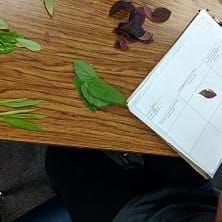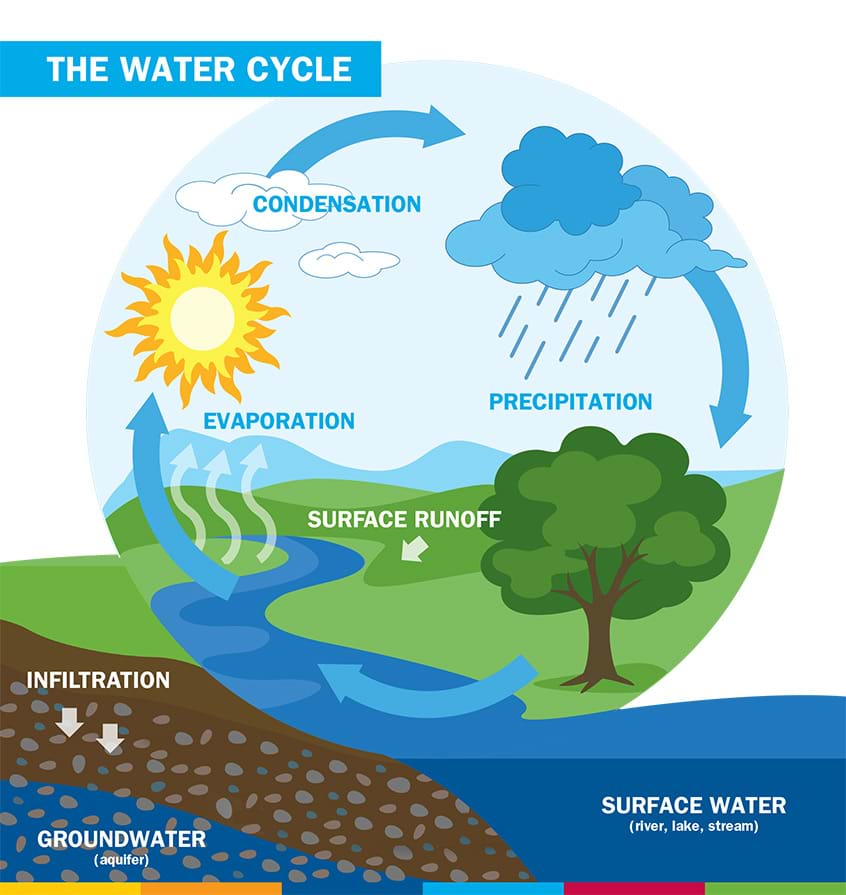
Measuring Viscosity High School Activity
Students calculate the viscosity of various household fluids by measuring the amount of time it takes marble or steel balls to fall given distances through the liquids. They experience what viscosity means, and also practice using algebra and unit conversions.

Soapy Stress Middle School Activity
To experience the three types of material stress related to rocks—tensional, compressional and shear—students break bars of soap using only their hands. They apply force created by the muscles in their own hands to put pressure on the soap, a model for the larger scale, real-world phenomena that forms, shapes and moves the rocks of our planet. They also learn the real-life implications of understanding stress in rocks, both for predicting natural hazards and building safe structures.

Red Cabbage Chemistry Middle School Activity
Students take advantage of the natural ability of red cabbage juice to perform as a pH indicator to test the pH of seven common household liquids. Then they evaluate the accuracy of the red cabbage indicator, by testing the pH of the liquids using an engineer-designed tool, pH indicator strips. Like environmental engineers working on water remediation or water treatment projects, understanding the chemical properties (including pH) of contaminants is important for safeguarding the health of environmental water sources and systems.

Spaghetti Bridges Middle School Activity
Civil engineers design structures such as buildings, dams, highways and bridges. Student teams explore the field of engineering by making bridges using spaghetti as their primary building material. Then they test their bridges to see how much weight they can carry before breaking.

What Is Energy? Elementary School Lesson
With an introduction to the ideas of energy, students discuss specific energy types and practical energy sources. Associated hands-on activities help them identify energy types in their surroundings and enhance their understanding of the concept of energy.

Fun with Leaf Chromatography! Middle School Activity
Shine a light on the fascinating world of chromatography! Students investigate different colored pigments in a variety of different colored leaves. By using isopropanol and chromatography paper, students separate the different pigments that make up the color of the leaf. They learn to analyze data by collecting and recording information after assembling an experiment in which they use the paper chromatography method. Students further learn about pigmentation by making sense of the process of the phenomena of photosynthesis. Students learn that producers (e.g., plants), have chlorophyll which absorbs the sunlight to produce the food they need to survive and the type of chlorophyll a plant has affects the color of the plant.

Engineering to Prevent Natural Disasters: Save Our City! Elementary School Activity
Students learn about various natural hazards and specific methods engineers use to prevent these hazards from becoming natural disasters. They study a hypothetical map of an area covered with natural hazards and decide where to place natural disaster prevention devices by applying their critical thinking skills and an understanding of the causes of natural disasters.

Simon Says Big Amplitude, Small Wavelength! Elementary School Activity
In this activity, students play the game Simon Says to make the amplitudes and wavelengths defined by the teacher. First they play alone, and then they play with a partner using a piece of rope.

What is a Nanometer? High School Activity
Students are introduced to the nano-size length scale as they make measurements and calculate unit conversions. They measure common objects and convert their units to nanometers, giving them a simple reference frame for understanding the very small size of nanometers. Then, they compare provided length data from objects too small to measure, such as a human hair and a flea, giving them a comparative insight to the nanotechnology scale. Using familiar and common objects for comparison helps students understand more complex scientific concepts.

Water Cycle Elementary School CurricularUnit
Water is essential to life. Understanding how the water cycle works, the importance of water as a natural resource, and how our household water cycle functions is essential knowledge for everyone. Through a range of water-based explorations and the engineering design process, students learn about the water cycle and how engineers manage it.

Paper Airplanes: Building, Testing, & Improving. Heads Up! Middle School Activity
Students learn the different airplane parts, including wing, flap, aileron, fuselage, cockpit, propeller, spinner, engine, tail, rudder, elevator. Then they each build one of four different (provided) paper airplane (really, glider) designs with instructions, which they test in three trials, measuring flight distance and time. Then they design and build (fold, cut) a second paper airplane design of their own creation, which they also test for flight distance and time. They graph the collected class data. Analysis of these experiments with "model" airplanes and their results help them see and figure out what makes airplanes fly and what can be changed to influence the flying characteristics and performance of airplanes.

Bubbling Plants Experiment to Quantify Photosynthesis Middle School Activity
Students learn a simple technique for quantifying the amount of photosynthesis that occurs in a given period of time, using a common water plant (Elodea). They use this technique to compare the amounts of photosynthesis that occur under conditions of low and high light levels. Before they begin the experiment, however, students must come up with a well-worded hypothesis to be tested. After running the experiment, students pool their data to get a large sample size, determine the measures of central tendency of the class data, and then graph and interpret the results.

Design and Build a Rube Goldberg Middle School Activity
In this two-part activity, students design and build Rube Goldberg machines. This open-ended challenge employs the engineering design process and may have a pre-determined purpose, such as rolling a marble into a cup from a distance, or let students decide the purposes.

Waves and Wave Properties Middle School Lesson
Students learn about the types of waves and how they change direction, as well as basic wave properties such as wavelength, frequency, amplitude and speed. During the presentation of lecture information on wave characteristics and properties, students take notes using a handout. Then they label wave parts on a worksheet diagram and draw their own waves with specified properties (crest, trough and wavelength). They also make observations about the waves they drew to determine which has the highest and the lowest frequency. With this knowledge, students better understand waves and are a step closer to understanding how humans see color.

Straw Bridges Middle School Activity
Working as engineering teams, students design and create model beam bridges using plastic drinking straws and tape as their construction materials. Their goal is to build the strongest bridge with a truss pattern of their own design, while meeting the design criteria and constraints. They experiment with different geometric shapes and determine how shapes affect the strength of materials. Let the competition begin!
Last updated 99 hour(s) ago


